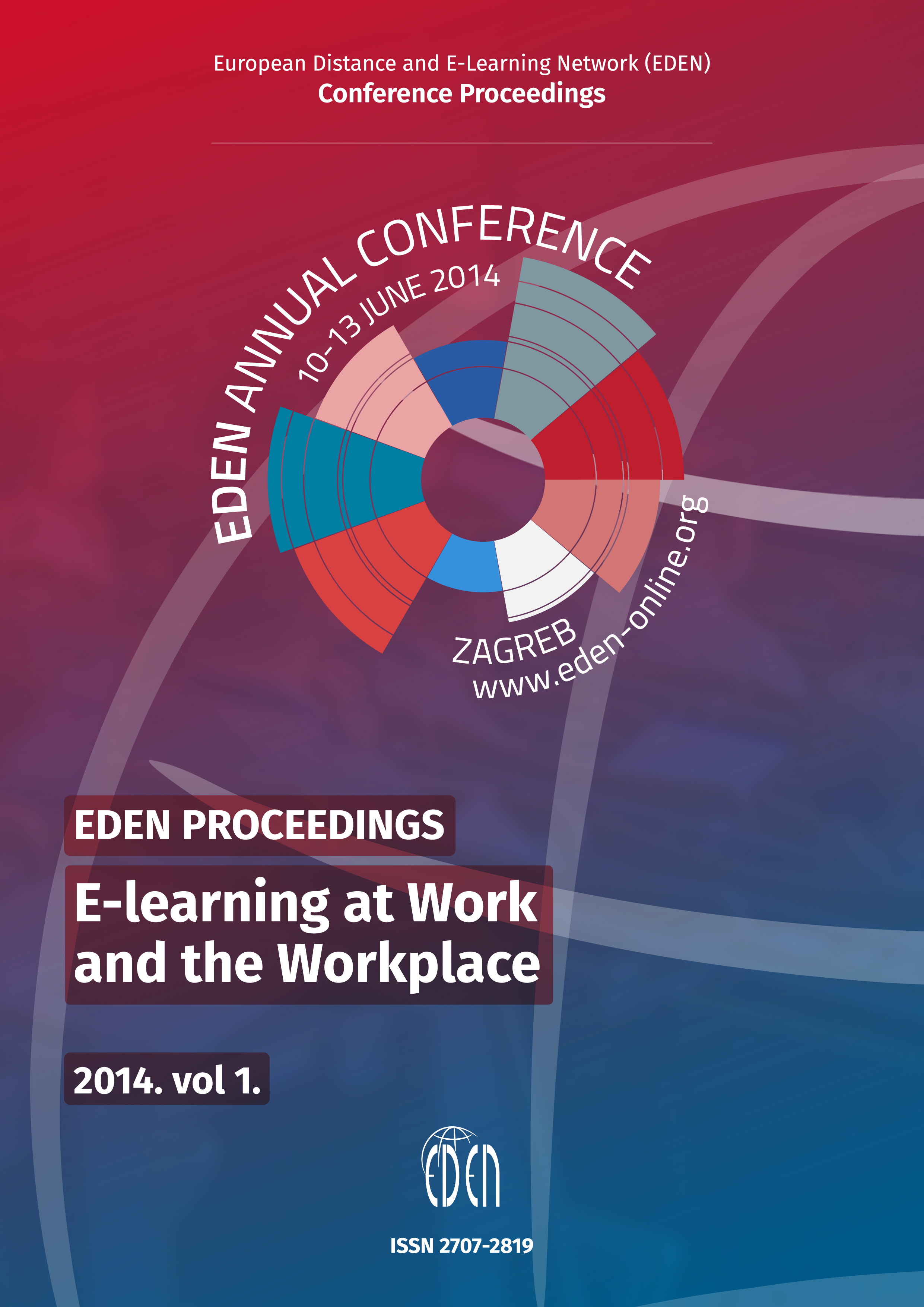SMEs: Generating Social Capital through Networks and Social Media
SMEs: Generating Social Capital through Networks and Social Media
Author(s): David Gray, Mark SaundersSubject(s): Social Sciences, Education, Higher Education
Published by: European Distance and E-Learning Network
Keywords: Enterpreneurship; Networked learning; New ICT and media applications in learning; SMEs; Social media
Summary/Abstract: A study by Gray, Saunders and Goregaokar (2012), found a strong engagement amongst SMEs with online information and communication technologies (ICT), some of it linked to social capital. The importance of these findings prompted additional research in this area. The new, 2014, study took as its focus SME use of social capital and set out to address the following questions:• What are the key business advantages to SMEs in using online and offline activities to generate social capital? • What are the relative merits of using online and offline activities to generate social capital? • Which forms of social media have SMEs tried but considered not worth pursuing? • Which online and offline communities do SMEs connect with and for what reasons?• What criteria do SMEs use when judging which communities to connect to? Social capital can be defined as the goodwill available to individuals and groups, and operates where friends, colleagues or general contacts receive opportunities to use their financial and human capital. Whereas human capital is a quality of individuals, social capital is a quality created between people through offline activities such as networking events and online activities which use social media. Two benefits that are relevant to SMEs flow from social capital: information and influence. Where two groups have dissimilar information, an entrepreneurial SME can span the structural hole by monitoring information, identifying problems and offering tailored solutions. Individuals can gain influence in networks by accumulating obligations that they can cash in at a future time. One way in which SMEs can seek to expand their social capital is through the use of social media. However, while access to the Internet by SMEs is almost universal, and their use of social media is growing, SME use of social media is lower than for larger organisations. Nevertheless, the 2012 study shows that 66% of SMEs considered networks and social media were of at least some importance to their continuing success. Having a website was considered important by 86% of SMEs, with 67% reporting that search engine optimisation is important to their continuing success. The new 2014 study confirmed these findings, revealing that SMEs have difficulty in purchasing high quality advice on SEO. The new study also suggests that social media sites such as LinkedIn are widely used to showcase the SME business and to build relationships with customers. However, direct links between the use of LinkedIn and higher sales revenues are hard to determine. Facebook is used, but not as extensively as LinkedIn being used more in a personal than a business capacity. Twitter can be effective when used in conjunction with other social media such as the business’ website and social media posts such as blogs, but there is the danger that tweeting replaces genuine business activity. YouTube is a potentially powerful medium, given that it is relatively cheap to produce and upload videos, since users seem prepared to accept less than professional video standards. In addition to social media, SMEs also use face-to-face networks to both supplement a social media presence and also in their own right. ‘You have to be in front of people to talk to them’. Overall, few if any SMEs claimed to have expertise in the uses of social media. However, they are keen to ‘get a presence’ in one or many media but realise they are on a learning curve. But whatever social media are used, they have to be ‘fit for purpose’ and appropriate to the business model being used. Social media are not a substitute for face-to-face networking and events. Indeed, the strategy is how to integrate them.
Journal: European Distance and E-Learning Network (EDEN) Conference Proceedings
- Issue Year: 2014
- Issue No: 1
- Page Range: 338-345
- Page Count: 8
- Language: English

